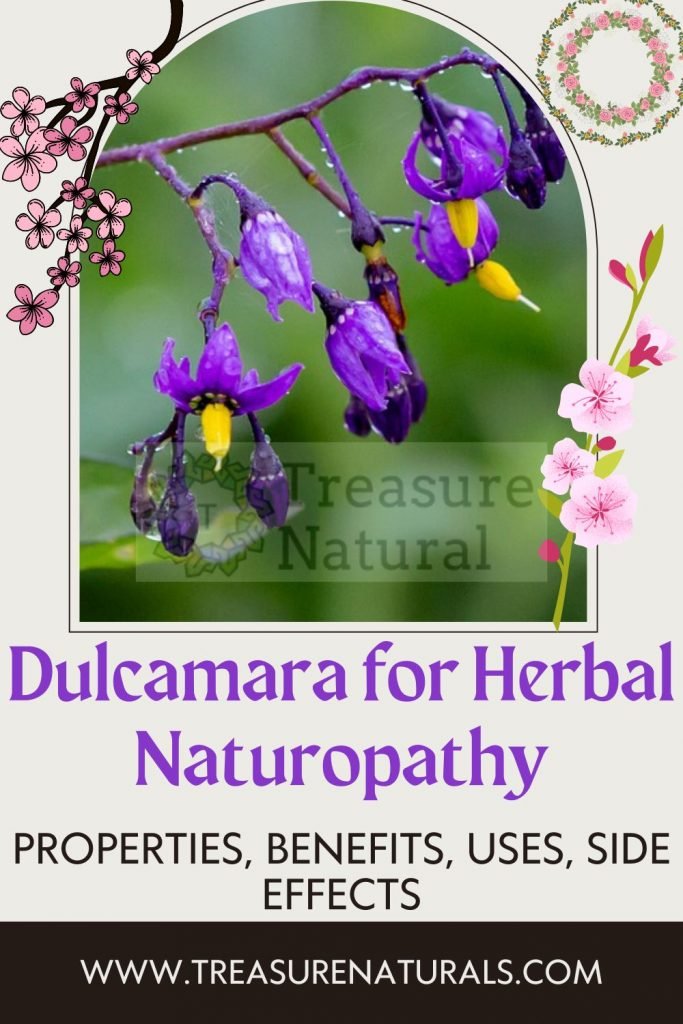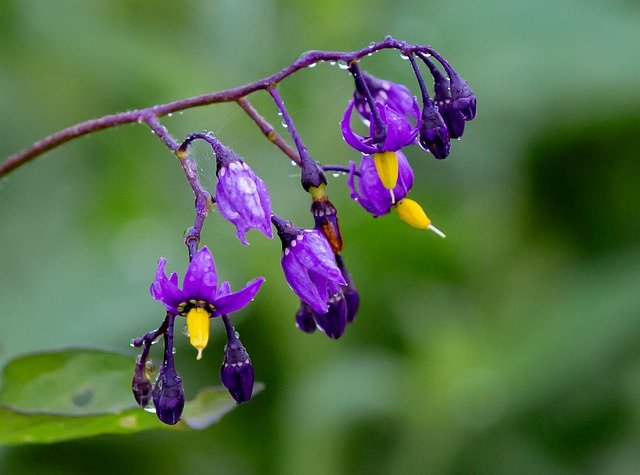
Dulcamara, a poisonous plant, is actually an excellent help in case of hypothermia and colds, as well as dysentery. Let’s find out better.
Properties and benefits of Dulcamara
Dulcamara is a valid remedy in the treatment of hypothermia and colds, as well as dysentery. Thanks to its warming and anti-inflammatory action, dulcamara soothes rheumatic ailments caused by weather changes, especially when the weather changes from wet to cold.
Dulcamara has the following properties: expectorant, purifying, homeopathic, purgative, diuretic, narcotic, pain reliever, hepatoprotective, emetic but also poisonous due to the presence of alkaloids. The dulcamara, in fact, mainly contains solamarines and solanine alkaloid.
These substances stimulate the glands and mucous membranes: in the event of poisoning, therefore, tremors, abdominal pains, dysentery and vomiting occur. The homeopathic remedy, consequently, calms the mucous membranes and is able to heat the whole organism.
How to use
In herbal medicine, the Dulcamara plant can be used in the preparation of soothing infusions of nervous coughs and tablets used against skin diseases.
The natural remedies that take advantage of dulcamara are of various kinds, including the treatment of seasonal colds and related ailments (nasal congestion, fever), allergies, skin diseases, rheumatism. The dulcamara can be used in the following cases:
- Chronic eczema : take 40 drops of fluid extract per day.
- Rheumatism : pour a cup of hot water over a teaspoon of dried herb; leave to infuse for 5 minutes, then filter and drink 2 cups a day for 1-2 months.
Dulcamara is a plant used by homeopathic medicine as a remedy to deal with some particular health conditions, using the stems and leaves that are particularly rich in substances and healing properties.
Contraindications of Dulcamara
The juice from the leaves and branches is poisonous and can cause dysentery, vomiting, skin rashes and cramps.
The most poisonous part, however, are the berries, especially the immature ones, because solanine is present in the green parts, which if ingested can cause vomiting, stabbing intestinal pains, decreased breathing frequency, loss of consciousness.
Do not take extracts based on dulcamara in case of bradycardia, bronchial asthma and glaucoma.
Description of the plant
The dulcamara ( Solanum dulcamara ) is a perennial plant tall from 60 to 120 cm belonging to the Solanaceae family.
The stem has a sweetish taste with a bitter aftertaste, it is a climbing plant and is recognized by its star-shaped violet flowers and its green berries at the beginning and red when ripe (which are poisonous).
Habitat of the Dulcamara
It grows in cool and rather humid places, on uncultivated land, on the banks of streams.
Background

The name Dulcamara is due to the taste of the twigs, first bitter and then sweet, which were chewed like licorice twigs. The stems of the dulcamara were used since the time of the Greeks to treat numerous ailments, including bruises and warts, and were hung on the neck of the sheep to keep evil spirits away.






